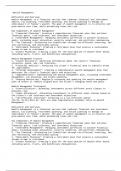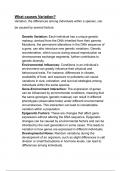Essay
GGZ2028 Full Paper
Mijn Research paper voor de opleiding Gezondheidswetenschappen, jaar 2 in de GGZ richting voor het vak Research in Psychopathology. Ik heb deze paper gehaald met een 7,5, en de variabelen Self-esteem, Depression, en Sports- and Non-sports group gebruikt. LET OP! Gebruik dit document alleen ter voor...
[Meer zien]












